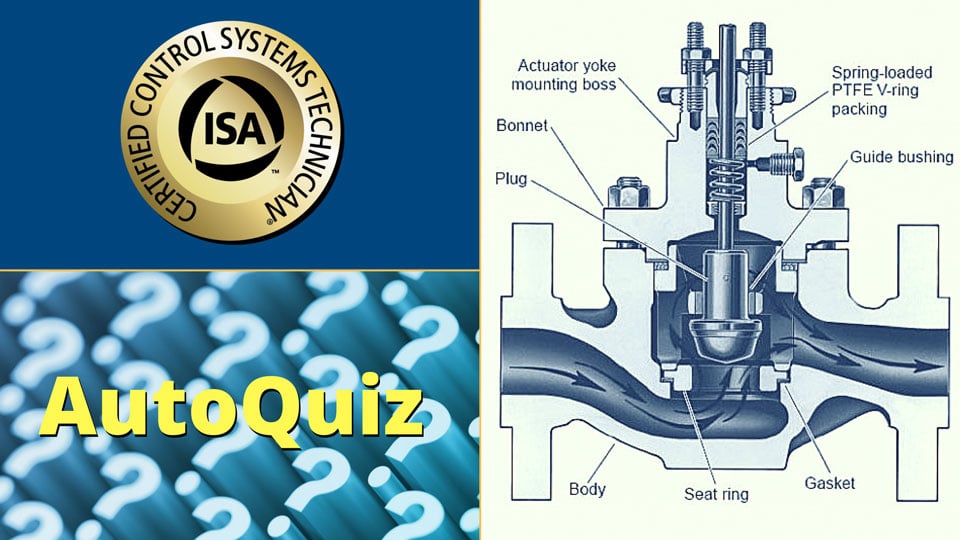AutoQuiz is edited by Joel Don, ISA's community manager.
Today's automation industry quiz question comes from the ISA Certified Control Systems Technician (CCST) program. Certified Control System Technicians calibrate, document, troubleshoot, and repair/replace instrumentation for systems that measure and control level, temperature, pressure, flow, and other process variables. Click this link for information about the CCST program. This question comes from the Level I study guide, Domain 3, Troubleshooting. Level I represents a professional who has a five-year total of education, training, and/or experience.

The control valve that produces an inherent equal percentage of increase, or decrease, over the existing flow when the plug is repositioned has a (an) __________ characteristic under constant pressure drop conditions.
a) modified parabolic
b) equal percentage
c) linear
d) quick opening
e) none of the above
The "inherent flow characteristic" is the relationship between valve capacity and valve travel, and we usually express it graphically. It comes by testing a valve with water as the fluid using a constant pressure drop across the valve. The most common are linear, equal percentage, modified parabolic, and quick opening.
Let's review the definitions:
Modified parabolic: An inherent flow characteristic that provides equal percent characteristic at low closure member travel and approximately a linear characteristic for upper portions of closure member travel.
Equal percentage: An inherent flow characteristic that, for equal increments of rated travel, will ideally give equal percentage changes of the flow coefficient.
Linear: An inherent flow characteristic that is a straight line on a rectangular plot of flow coefficient versus rated travel. Therefore, equal increments of travel provide equal increments of flow coefficient.
Quick opening: An inherent flow characteristic in which a maximum flow coefficient happens with minimal closure member travel.
The correct answer is B.
Image source: EnggCyclopedia




